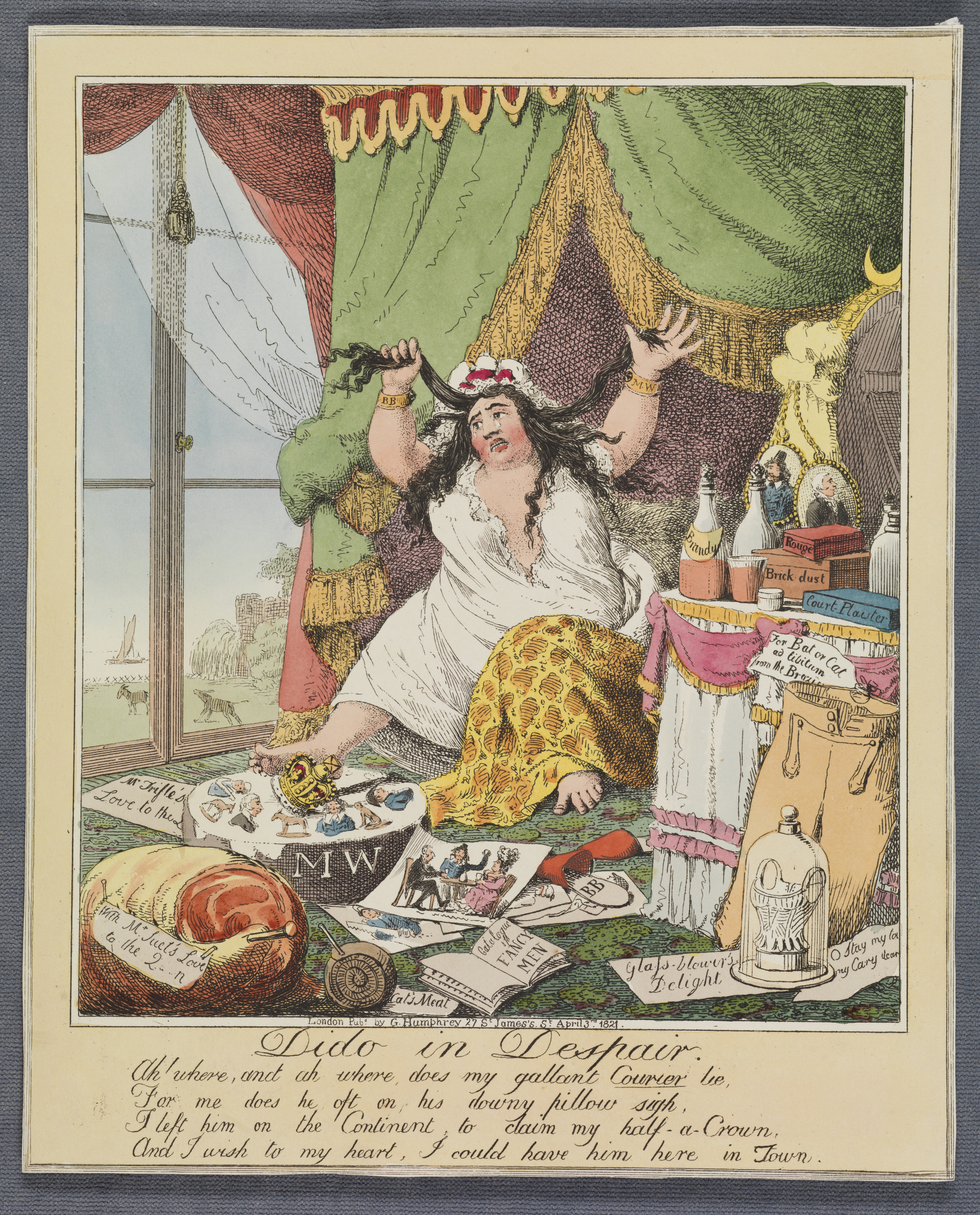
“Wellington sits behind a small cloth-covered table flanked by eight other representations of himself, as depicted in recent caricatures, apparently all by W. Heath. The arrangement is evidently that of Charles Mathews’ ‘At Homes’, see British Museum Satires No. 14714, &c., Wellington, like Mathews, being in propria persona at the table. In this guise he wears the robes (indistinguishable from Coronation robes) and collar of the Garter and the order of the Golden Fleece and a (crown-like) ducal coronet; his head is turned in profile to the right. Immediately below him, the head and hands of another Wellington, who is crouching on the floor, project from the tablecloth; he grasps a royal crown, and wears a cap coloured blue and resembling a tam-o’-shanter, but perhaps intended for a coronet. The other Wellingtons, all standing (left to right): [1] A mute as in British Museum Satires No. 15501, in profile to the right. [2] A Grenadier, full-face and rigidly at attention, much as in British Museum Satires No. 15768, but without the musket. [3] A ratcatcher stooping to the left and touching his hat, the cage in his left hand (cf. British Museum Satires No. 15806). [4] Aged and cloaked, wearing spectacles, with bowed head, he clasps a cross in both hands. [5] The old woman in a soldier’s coat of British Museum Satires No. 15721, facing, and apparently in angry altercation with, the seated Wellington. [6] The coachman of British Museum Satires No. 15731, in profile to the left, holding shaft and lash of his whip as if they were the reins of a four-in-hand which he is driving. [7] Wellington in uniform, directed to the left, wearing his plumed cocked hat and holding up with a furtive expression a sword with a damaged blade in a dilapidated scabbard. [8] A mummy-case with an aperture to show Wellington’s head with the forefingers compressing his mouth; below the aperture is the word ‘Mum’. (Apparently from a satire on Wellington’s silence as to his intentions on Catholic Relief until the eve of the opening of Parliament, see British Museum Satires No. 15659.) There is a background of curtains. Cf. British Museum Satires No. 15787.”–British Museum online catalogue.
- Printmaker: Heath, William, 1795-1840, printmaker.
- Title: Actor of all work [graphic] / [man with an umbrella] Esqr.
- Publication: [London] : Pub. June 15, 1829, by T. McLean, 26 Haymarket …, [15 June 1829]
829.06.15.01+
Acquired May 2023

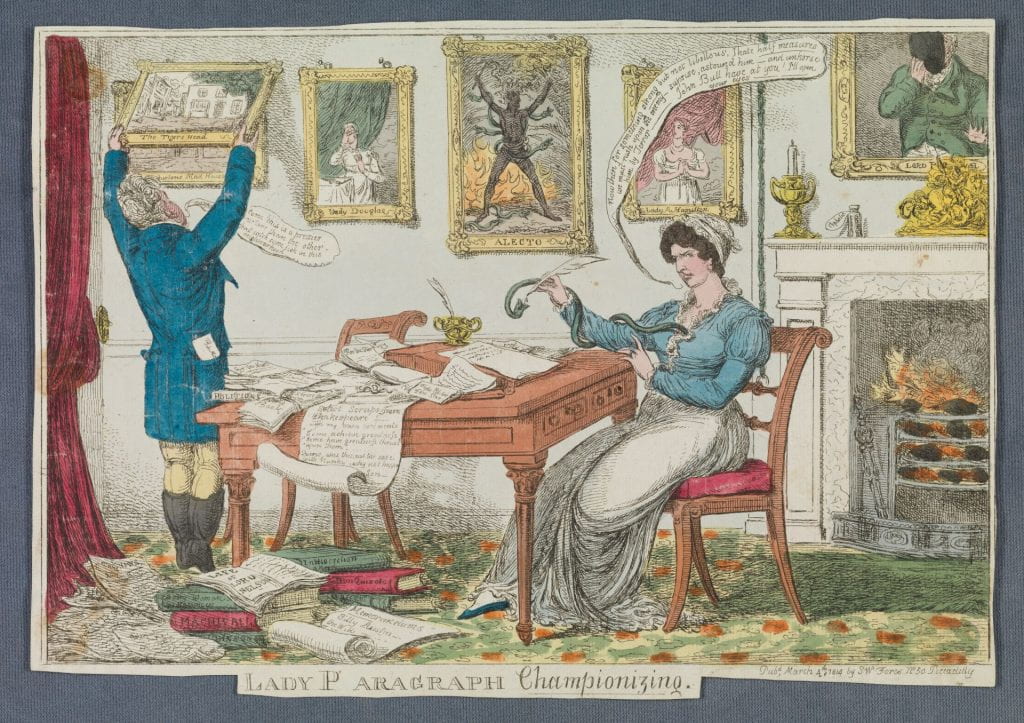
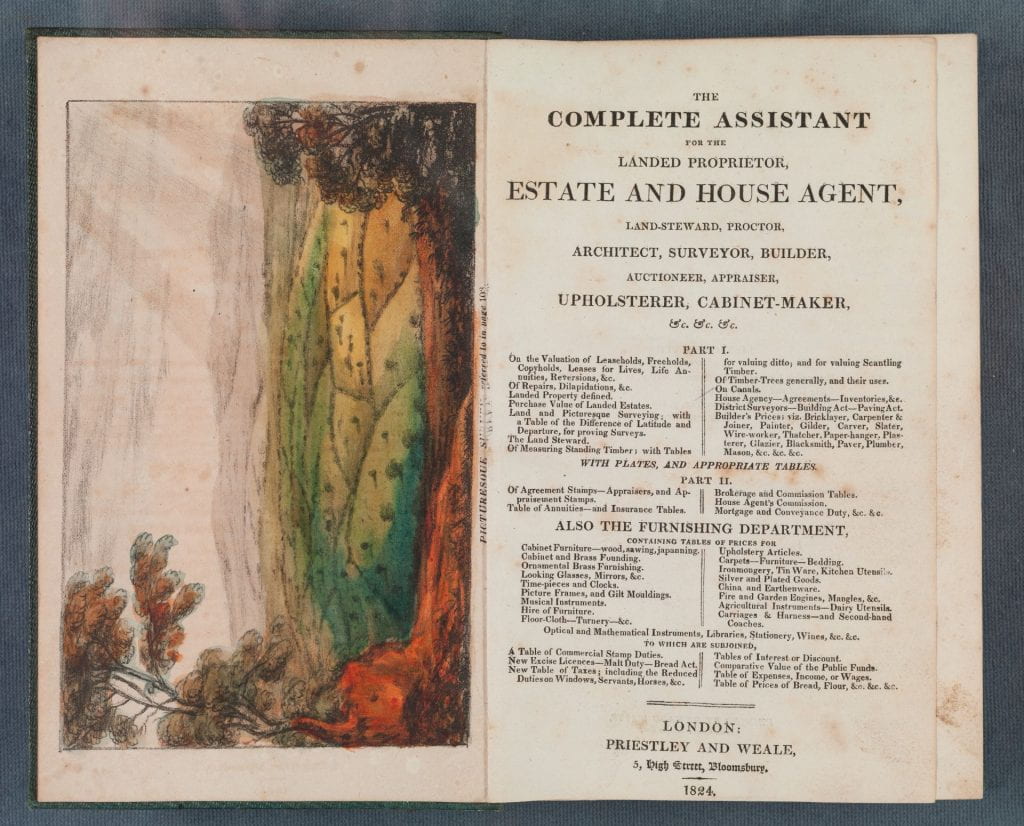
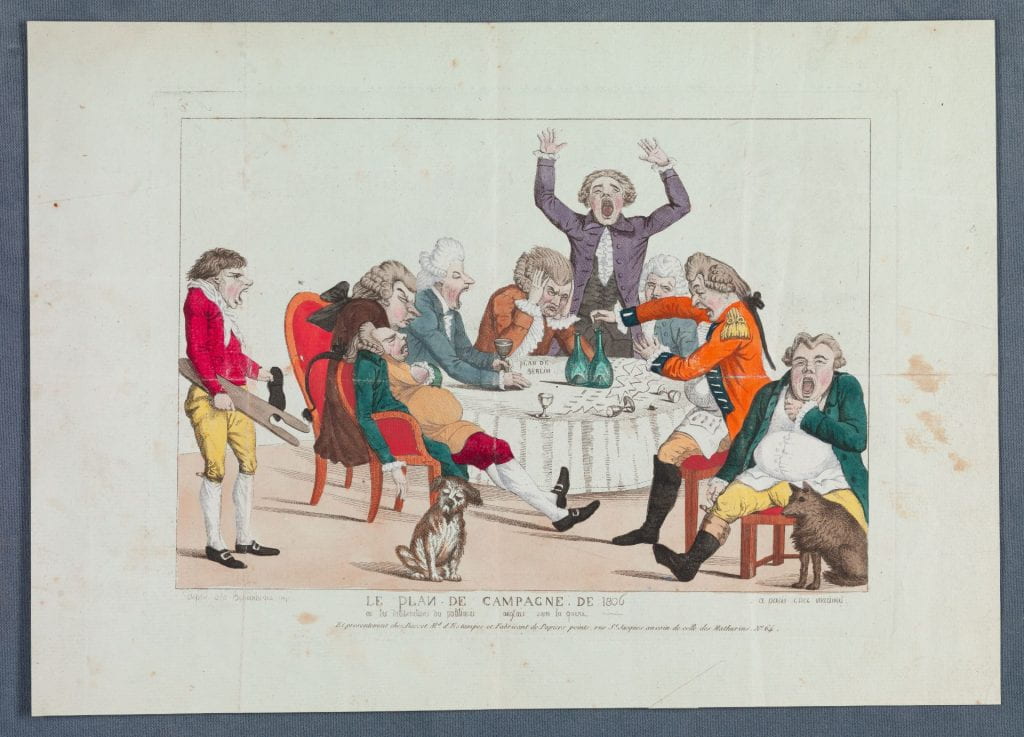
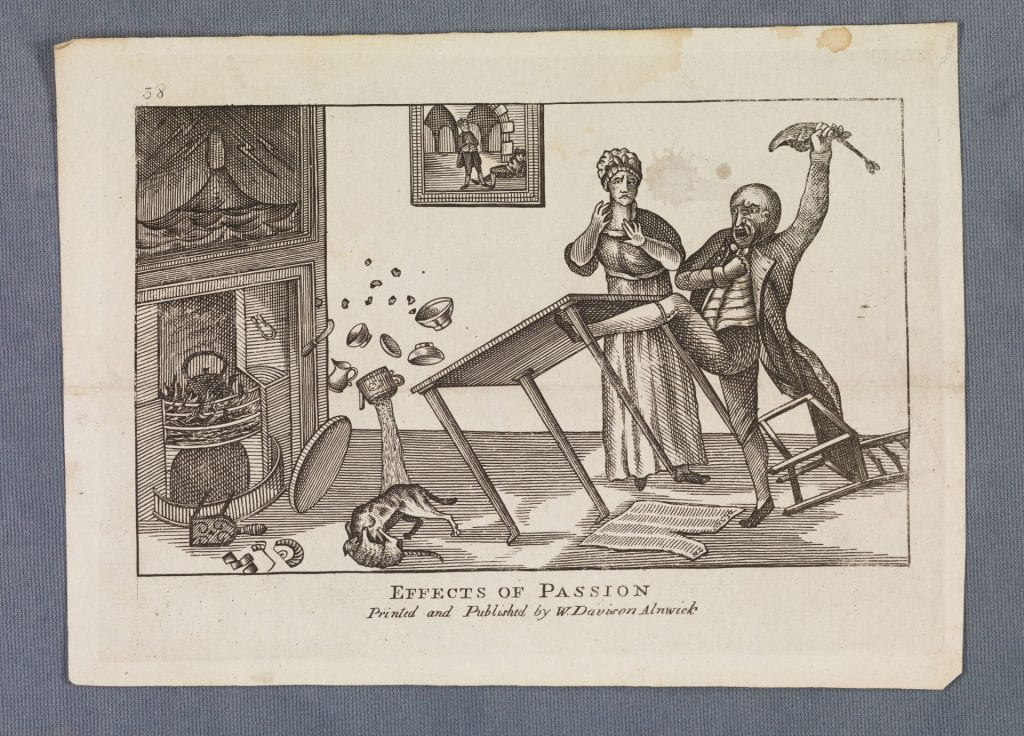 A scene in a sitting room, a man in a fit of anger kicks over a chair and table set with tea; a pitcher, cups and saucers, tongs and other tableware are in flight or shattered on the floor. The man holds his wig in his left hand as a woman looks on with fear. Two cats fight in front of a fireplace above which hangs a seascape with rough waters and lightening. On the back wall another painting shows a man standing over a woman.
A scene in a sitting room, a man in a fit of anger kicks over a chair and table set with tea; a pitcher, cups and saucers, tongs and other tableware are in flight or shattered on the floor. The man holds his wig in his left hand as a woman looks on with fear. Two cats fight in front of a fireplace above which hangs a seascape with rough waters and lightening. On the back wall another painting shows a man standing over a woman.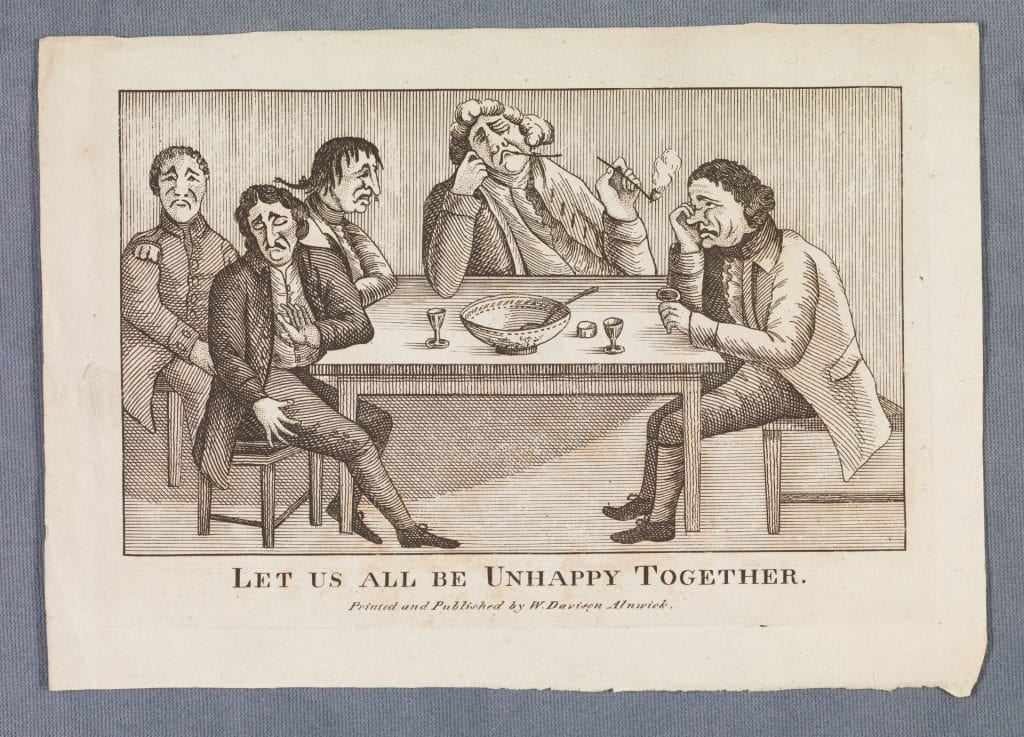 “Popular print, satire, after print published by Laurie & Whittle in 1794 (British Museum satires no. 8596): five men sit at a small square table on which are glasses and an empty punch-bowl, all have expressions of deep melancholy: one reverses his glass, another breaks his pipe, the bowl of which still smokes, the third weeps, the fourth looks down with a gesture of deprecating misery, the fifth looking towards the viewer.”–British Museum online catalogue.
“Popular print, satire, after print published by Laurie & Whittle in 1794 (British Museum satires no. 8596): five men sit at a small square table on which are glasses and an empty punch-bowl, all have expressions of deep melancholy: one reverses his glass, another breaks his pipe, the bowl of which still smokes, the third weeps, the fourth looks down with a gesture of deprecating misery, the fifth looking towards the viewer.”–British Museum online catalogue.